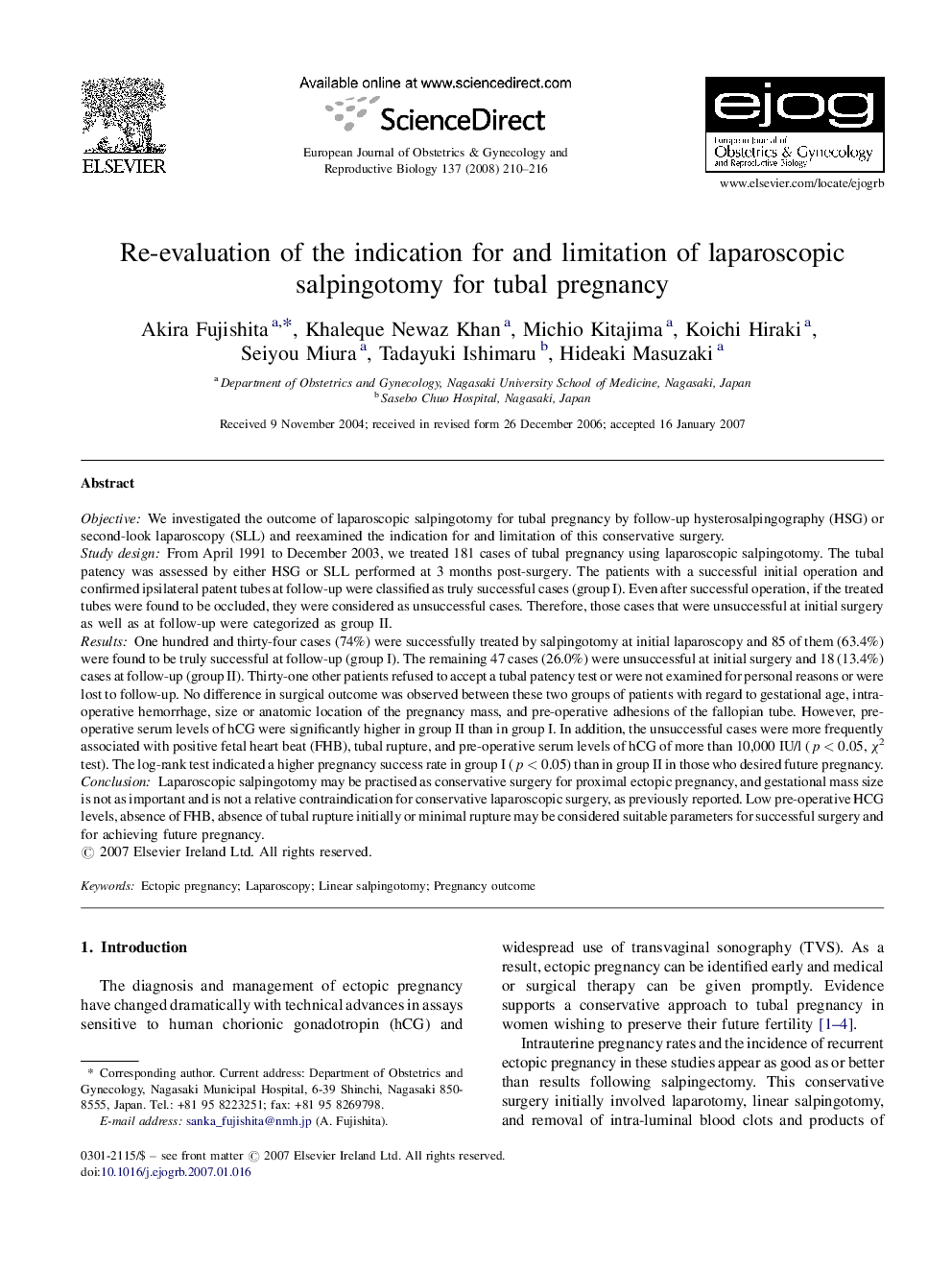| Article ID | Journal | Published Year | Pages | File Type |
|---|---|---|---|---|
| 3921932 | European Journal of Obstetrics & Gynecology and Reproductive Biology | 2008 | 7 Pages |
ObjectiveWe investigated the outcome of laparoscopic salpingotomy for tubal pregnancy by follow-up hysterosalpingography (HSG) or second-look laparoscopy (SLL) and reexamined the indication for and limitation of this conservative surgery.Study designFrom April 1991 to December 2003, we treated 181 cases of tubal pregnancy using laparoscopic salpingotomy. The tubal patency was assessed by either HSG or SLL performed at 3 months post-surgery. The patients with a successful initial operation and confirmed ipsilateral patent tubes at follow-up were classified as truly successful cases (group I). Even after successful operation, if the treated tubes were found to be occluded, they were considered as unsuccessful cases. Therefore, those cases that were unsuccessful at initial surgery as well as at follow-up were categorized as group II.ResultsOne hundred and thirty-four cases (74%) were successfully treated by salpingotomy at initial laparoscopy and 85 of them (63.4%) were found to be truly successful at follow-up (group I). The remaining 47 cases (26.0%) were unsuccessful at initial surgery and 18 (13.4%) cases at follow-up (group II). Thirty-one other patients refused to accept a tubal patency test or were not examined for personal reasons or were lost to follow-up. No difference in surgical outcome was observed between these two groups of patients with regard to gestational age, intra-operative hemorrhage, size or anatomic location of the pregnancy mass, and pre-operative adhesions of the fallopian tube. However, pre-operative serum levels of hCG were significantly higher in group II than in group I. In addition, the unsuccessful cases were more frequently associated with positive fetal heart beat (FHB), tubal rupture, and pre-operative serum levels of hCG of more than 10,000 IU/l (p < 0.05, χ2 test). The log-rank test indicated a higher pregnancy success rate in group I (p < 0.05) than in group II in those who desired future pregnancy.ConclusionLaparoscopic salpingotomy may be practised as conservative surgery for proximal ectopic pregnancy, and gestational mass size is not as important and is not a relative contraindication for conservative laparoscopic surgery, as previously reported. Low pre-operative HCG levels, absence of FHB, absence of tubal rupture initially or minimal rupture may be considered suitable parameters for successful surgery and for achieving future pregnancy.
